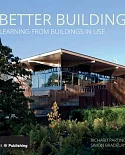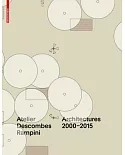The SAGE Handbook of Architectural Theory documents and builds upon some of the most innovative developments in architectural theory over the last two decades. Bringing into dialogue a
range of geographically, institutionally and historically competing positions, the book examines and explores parallel debates in related fields. The book is divided into eight sections:
- Power/Difference/Embodiment
- Aesthetics/Pleasure/Excess
- Nation/Spectacle/Modernity
- History/Memory/Tradition
- Design/Practice/Production
- Technology/Science/Virtuality
- Nature/Landscape/Sustainability
- City/Metropolis/Territory
Creating openings for future lines of inquiry and establishing the basis for new directions for education, research and practice, the book organizes itself around specific case studies to
provide a critical, interpretive and speculative enquiry into the relevant debates in architectural theory. A methodical, authoritative and comprehensive addition to the literature, the
Handbook is suitable for academics, researchers and practitioners in architecture, urban geography, cultural studies, sociology and geography.





















